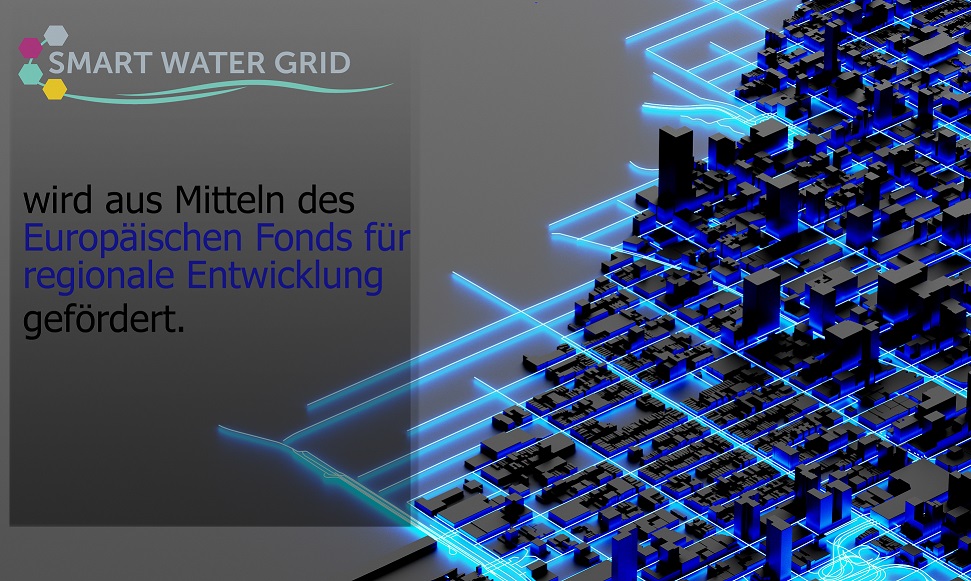Smart Water Grid" pilot project for intelligent water networks enters hot phase

The smart water networks project worldwide of the company narz systems is funding by the EU
Press
The increasing dryness shows the water suppliers, network operators and in some places already the users in the population that the flowing water from the tap, can be partly less natural, than the current from the socket. As the weather gets warmer and warmer, drinking water suppliers are having problems with their extraction plants as well as their distribution networks with the buffers they contain and the quality of the drinking water. Therefore, the medium-sized company for IT and automation solutions Narz systems GmbH & Co. KG is firmly convinced that there is a need for a smart grid for water and this is exactly where the company comes in with the development project "smart Water Grid", which is done in cooperation with partners and a project advisory board.
All components of the water grid will be integrated
The development within the project takes place on the basis of the existing solution audako as an evolutionary further development. audako already has functionalities that benefit the project: High-performance storage for time series, connection of remote control technology according to e.g. IEC standards and a web-based interface with dashboards, schemas, simple evaluations and reports. In the project, existing technologies from the "new" fields of Big Data, Web 4.0, IoT (Internet of Things) are combined with those from the "tried and tested" fields of automation, telecontrol and process control technology in order to generate considerable customer benefits through this combination. With the "Smart Water Grid" project, narz systems goes significantly further than the state of the art, which often only covers the neuralgic points of a network, as all components of a water network are integrated. From the deep well, which is already equipped with monitoring technology in many places, to the customer meter - which is not yet recorded today - all data flows into a central platform in order to map a digital twin of the supply network. The digital twin is the digital representation of the water network, consisting of data and models. It is the digital twin that enables the use of simulations and algorithms to derive forecasts for the future and to detect anomalies. Modern approaches from the field of machine learning are used to automatically detect leaks or pipe bursts. This is particularly interesting for a utility's local networks.
lnformation security and privacy are a focus
Information security and data protection are very important aspects in the face of ever-increasing numbers of cyber attacks on public infrastructures and the collection of household meters (keyword usage profile). The research project is now entering its final phase. The "Smart Water Grid" project is scheduled to be completed by the end of June 2022, which will mark the end of a two-year period. With the targeted development status at the end of the project, a functional software solution will be available that customers can later use either from the cloud or on their own systems, as well as extensive documentation on the resulting solution and a best-practice example gained through a pilot project at a customer for operators and interested parties. The best practice is then intended to make it easier for other operators to gradually start using the solution that has been created.
Reduce emissions and water losses
"With a digital twin of the grid and machine learning (components of the development of the "Smart Water Grid"), we want to help operators reduce losses and optimize grid utilization, reported Sebastian Narz (Managing Director at narz systems) optimistically. By reducing CO2 emissions and water losses, the project will make a significant contribution to sustainable development if targets are met. Thus, the reduction of water losses by 2% in a supply area of about 25,000 inhabitants can save about 22,500 m³ of water per year, which would then either require 20,250 kWh less energy or save 9.6t of CO2 emissions (treatment and pumping) or it could supply another 166 3-person households.
Project receives support from EU funds
The development of a "Smart Water Grid" with a sustainability factor also convinced the European Union to support the project with funding from the European Regional Development Fund, which the company is particularly pleased about. Public funding makes it possible to implement this development within the estimated time frame and to the planned extent.
Artikel (ohne Bild) erschienen im: Article (without picture) published in: gwf Wasser+Abwasser issue 03/2022



